BOYS BOOK OF CAMPING AND WOOD CRAFTS
BOYS BOOK OF CAMPING
AND WOOD CRAFTS
with a new introduction by Herb Gordon, author of The Joy of Family Camping
BERNARD S. MASON


THE DERRYDALE PRESS
Published in the United States of America
by The Derrydale Press
4720 Boston Way, Lanham, Maryland 20706
Distributed by NATIONAL BOOK NETWORK, INC.
First Derrydale Edition 2001
Introduction Copyright 2001 by The Derrydale Press
This Derrydale Press paperback edition of Boys Book of Camping and Wood Crafts is an abridged republication of the edition first published in 1939 by A. S. Barnes & Company under the title Woodcraft, here updated with a new introduction.
All rights reserved. No part of this publication may be reproduced, stored in a retrieval system, or transmitted in any form or by any means, electronic, mechanical, photocopying, recording, or otherwise, without the prior permission of the publisher.
Library of Congress Cataloging-in-Publication Data
Mason, Bernard Sterling, 1896-1953.
[Woodcraft. 1, Campcraft]
The boys guide to camping and wood crafts / Bernard S. Mason.
p. cm.
Originally published: Woodcraft. New York : A.S. Barnes & Co., 1939. With new introd.
ISBN 978-1-58667-072-6
1. Camping. I. Title.
GV191.7 .M266 2001
796.54dc21
2001028644
 The paper used in this publication meets the minimum requirements of American National Standard for Information SciencesPermanence of Paper for Printed Library Materials, ANSI/NISO Z39.481992. Manufactured in the United States of America.
The paper used in this publication meets the minimum requirements of American National Standard for Information SciencesPermanence of Paper for Printed Library Materials, ANSI/NISO Z39.481992. Manufactured in the United States of America.
CONTENTS
INTRODUCTION
The most beautiful and colorful movable home in all the world is the tepee of the plains. With this commentary on the traditional dwelling of Native Americans, Bernard S. Mason illustrates not only his deep admiration of them as a people but provides a unique review of the variety of dwellings they built before the arrival of Europeans.
But there is far more to Boys Book to Camping and Woodcraft than recreating ancient dwellings. The author also reviews camping styles practiced before World War II when outdoor travelers were far less ecologically aware of the critical need for conservation than those who head for the woodlands today. He reviews the clothing, shoes, tents and campfire gadgets they once used or wore and the critical role of good axmanship in their camps.
As for the teepees of the Native Americans, there were far more styles of housing among those peoples than conical tents. Mason notes that as the natural environment varied, the type of shelter varied depending upon the materials, the environment and the culture of the tribes.
Wigwams, most people seem to picture in their mind as being pointed or cone shaped... but the pointed style was from the most characteristic and commonly used dwelling in the northern woodlands. Rather a dome-shaped wigwam or waginogan (pronounced wge-noogn) was the permanent year-around shelter... the pointed bark type or nasa-ogan (pronounced nsa-o-gn) being used only in the temporary camps during the summer months when the family was moving frequently from place to another.
TEPEES
For a moment lets concentrate on the tepee, which Mason calls the nearest to the ideal dwelling that has ever been devised. Tepees were found across the wide frontier of prairie-land, used alike by the Dakota, the Assiniboin, the Cheyenne, the Arapaho, the Missouri, the Omaha, and the Crow, among others.
The first summer tepees were moved from campsite to campsite by the women and dogs. They rarely were more than ten feet tall. But once horses became available to the American Indians, tepees bloomed overnight, typically to sixteen to twenty feet in height. Sometimes the size of tepees towered to even twenty-five feet high.
For those fascinated by tepees, Mason carefully and skillfully describes how to build one, complete with measurements and diagrams. Those technical descriptions of making a tepee could be followed today for a family that wants to build an unusual summer home on a distant beach. Use long commercial poles instead of chopping down and trimming trees. Or an outdoor camping facility could add a large tepee as a special meeting place for boys and girls who are in their camp for the summer. Mason also provides detailed instructions for making a permanent wigwam of sturdy branches covered with bark. But modern campers should use plastic or aluminum poles covered with sheets of heavy plastic.
LEAN-TOS
Mason illustrates how Native Americans built various styles of slab lean-tos that eventually led to the construction of the famed log Adirondack shelters, with an open front and sloping roof. These are still popular at trail campsites in many wilderness settings. He concludes his discussion on various shelters listing woods that were used in housing from those very resistant to decay to woods that decay very quickly.
Masons advice on camping styles and techniques popular before the 1940s are described in a wonderfully informative chapter on Beds and Duffel. To Mason, our grandfather campers were broken into two distinct groups: the innocent tenderfoot who means well and tries hard and the tenderfoot No. 2. The former hauls into the woods... far and away too much stuff, most of which will never be used. The latter is an outrageous braggart who takes little or nothing and, ignoring the reality of a tough outing, boasts of his ruggedness but only after he returns to his desk in the city.
Mason says that both types of tenderfeet, however, eventually learn how to create a comfortable camp if they camp long enough. The former who settles down to an outfit that is at once light and adequate, and the latter who realizes that camping is not synonymous with roughing it.
TENTS
Tents, of course, then as now, were the city dwellers normal home in the woodlands and forests. Although Mason calls canvas tents somewhat heavy, he nevertheless recommends them, when made waterproof, rather than the newer synthetics that are edging into the campers market.
Of the tents campers could buy, Mason recommends the explorers tent, high enough to stand in, with a front flap which formed a sort of extended roof above the door, which could be raised by day, or tied to the tent at night. For cold weather, Mason recommends the Baker tent, a popular model of his day because it had a large front flap that could be opened on a grim night while a small reflector fire was built in front to provide heat. Mason provides drawings of the tent as he does throughout the book with everything he describes.
BEDDING, SLEEPING BAGS AND PACKS
To enjoy a sound nights sleep, Mason describes how campers can build a comfortable bed. Even though plastic air mattresses had been developed by the 1930s, Mason did not recommend them because in cold weather they did not keep you warm unless they were covered with blankets. This is still true today, but now we have the luxury of self-filling foam pads that protect the tent dweller from cold and rocky ground.
As for sleeping bags, they were generally made by pinning blankets together. Above all, Mason advises campers to stay away from cotton blankets. Wool was the ultimate wilderness fabric, whether for clothing or bedding.


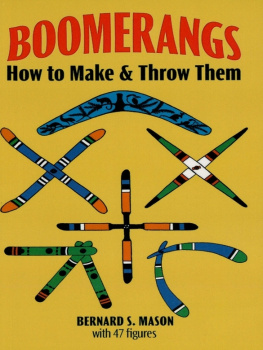
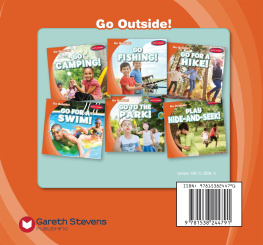
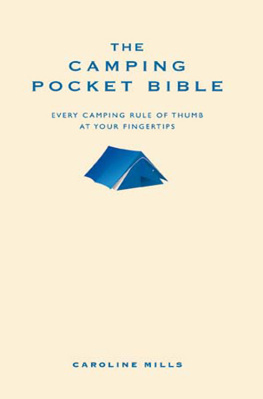



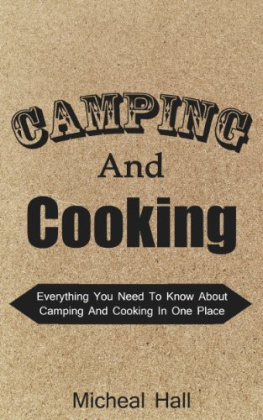


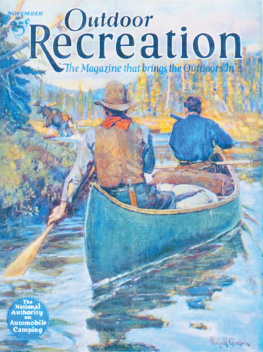

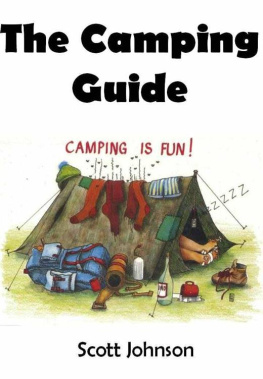


 The paper used in this publication meets the minimum requirements of American National Standard for Information SciencesPermanence of Paper for Printed Library Materials, ANSI/NISO Z39.481992. Manufactured in the United States of America.
The paper used in this publication meets the minimum requirements of American National Standard for Information SciencesPermanence of Paper for Printed Library Materials, ANSI/NISO Z39.481992. Manufactured in the United States of America.